Have you ever grown your own mustard? Just you can try to sow seeds on your homestead. If you understand the types of this plant, you can not only learn how to grow mustard, but also enrich the soil with natural fertilizer.
First, let's figure it out for what we need mustard? From the grade of the plant will depend on the final result. For example, if you plant a nine or salad mustard, then you can eat green leaves. Just be appropriate to add to fresh salads. This vitamin supplement is suitable only if the leaves are collected from a young plant. If you have recommended to buy white mustard seeds, then, most likely, the consultant in the store meant that you will use the plant as a ciderat, that is, natural fertilizer.
If you sow black mustard, then you can stockpenter in spices, adding chopped mustard powder in food to give a spicy and sharp taste.
If we are talking about growing an anchored plant, then from the mustard you can get valuable oil, use seed powder for medicinal purposes (like mustard pieces) and for collecting honey. Then you can purchase 1 grade plants to choose from: White, SIZYA (Sareptskaya variety) or black mustard.
About Plant
Mustard is an annual herbaceous plant related to the cabbage family. The plants have a direct long stem, during the flowering period, the mustard is covered with yellow florals on a flower brush. Flower, flowers will grow into small fruits, reminiscent of the shape of the pod. It has small round fruits. White mustard seeds are small, yellowish painting, in black - dark brown or brownish-red.
The birthplace of the plant is Asia and Egypt, but people have long learned to cultivate this culture, adapting to the local climate. So, the mustard is widespread in France, Holland and China. Grow this culture and in Russia.
The composition of the mustard seeds is unique and therefore is widely used not only as feed for livestock, but also for the food industry, as well as for therapeutic purposes. Thus, the seeds contain a lot of essential oil (allyl and fat), as well as protein, zinc, iron, potassium, sodium and magnesium. Present in the composition of plants (seeds and leaves) a large number of vitamin human health: C, A, E and RR, as well as vitamins of group V.
The benefits of mustard mankind was known for a long time. First of all, the seeds of the mustard enhance appetite and have a slight laxative effect. Help to get rid of inflammatory processes in the body and bring slags. A mustard is used to treat rheumatism, with disorders of digestive organs, liver diseases and hypertension.
Volatile pairs of mustard seed have a slight antibacterial effect, and the air is also disinfected. In antiquity, the characteristic facilitated the condition of the patient with a pork, applying a compress from mustard to the tumor.
Photos mustard:
To use the plant for therapeutic purposes, it is necessary to assemble mustard seeds from the lower and medium ripened pods. The collected raw materials need to be performed in a ventilated place deprived of direct sunlight.
How the mustard grows
The plant is not contemptuous, so you can sow on the cultures free from the cultivation, the mustard seeds. Surely you paid attention to the beautiful yellow fields that appeared at the end of September-October. When the harvest fields are assembled, the time of use in the soil of useful feeders is coming. It will help to maintain maximum nutrients, as well as moisture in the ground - the plant mustard. It is enough to make this natural fertilizer in the ground and after 3-4 days you can observe how the first shoots will appear.
Growing mustard very quickly, if you sit in the culture at the beginning of spring, then at the end of August you can collect crop of fragrant seeds. If culture is used as an enrichment of the soil, then you can sow mustard at the end of September, it will saturate the soil with nutrients and oxygen.
How to grow mustard
We learn how to grow a white mustard - a popular grade of the plant, which is grown in Russia and other countries of the world. Most often, white mustard planted in order to improve the quality of the soil. What can be obtained after growing mustard? As soon as the plant is strengthened and goes into growth, a good root system develops. The roots of the mustard are tested from the soil phosphorus and, processing, give it back. As a result, the Earth is enriched and becomes fertile. All causative agents of diseases (pasta, fusariosis or phytoofluorosis) die, which has a positive effect on the future crop. In addition, the mustard will help in the fight against the wireman, and from this pest is very difficult to get rid of.
White mustard grows quickly if the culture is already sitting at the beginning of spring, then you can not worry about the fact that the plant will die from frosts. Mustard steadfastly withstands night decreases, flesh to -5 oS. Therefore, this culture is so highly appreciated due to the possibility of growing mustard as too early (before planting potatoes), and late when the harvest is already assembled.
From the moment of sowing to the soil and before receiving the green mass of the plant, it takes only a couple of months. Seeds retain the ability to germinate even with a negative temperature of the soil (freezing from 0 to -3 oWITH). Mustle mustard if she was sown with the purpose of enriching the nutritional properties of the soil, before the start of flowering.
Planting Musthers
To sow mustard - the task is not difficult, the main thing is to decide why and for what period it is necessary to start planting the plant.
Rules landing mustard as Siderat:
- First, with the help of flat cuts, it is necessary to break the soil (depth up to 5 cm).
- We take ready-made mustard seeds (sold in specialized stores in large packages).
- Make a furrow in the ground at a distance of 15 cm from each other. According to the information specified on the package, sowing rate ranges from 120 to 150 g per 1 hectare of land.
- You can go to another way and sow the mustard seeds of the prizes, without adhering to the above rules. But then the consumption of seeds increase 2 times.
- We blow up the land and plug the mustard seeds by 3 cm.
Everything, with the landing of the mustard completed. Now you can observe the process of plant development and rejoice that the soil will be released from pests, weeds and is saturated with nutrients.
Sowing white mustard can be carried out in spring time before planting vegetables and potatoes. Approximately 3-4 weeks before the estimated date of landing of vegetable crops, you can proceed to sowing. Normally, you need to hear up to 4 g of seeds per 1 m 2 Earth. If you need to declare the fight against the wiretop, then the seed rate increases to 5 g and begin sowing to land the main vegetable crops on the country area or after harvesting.
How to sow seeds:
- we prepare the soil - it is advisable to dig a bed or at least break the earth;
- sowing we carry out to 2 cm at a depth;
- seying seeds can be asked or rows;
- after sowing the land you need to pour well.
We do nothing more, I only observe the Machinery. Already 3-4 days after sowing mustard, you can see the first shoots. After 3-4 weeks before planting vegetables or root, mustard must be cut and just decompose on the beds. If you have prepared the soil for planting seedlings, just planted seedlings into the prepared wells, and let the mustard remain in the aisle. She will protect shoots from frosts, droughts and pests. When young seedlings root and grow up, the mustard can be mounted and leave on beaten as mulch.
The cultivation of the mustard in the summer on the aisle - sowing is carried out immediately after planting vegetable crops. In the process of growing mustard, it is necessary to constantly ensure that the plant does not greatly grow up and preventing the development of vegetable crops. During the season you can dangle mustard 2, or even 3 times. It is only important to have time to cut the greens before the plant does not begin to bloom to prevent the proliferation of mustard throughout the site.
Benefits for soil mustard, like Siderat, will bring huge, especially if you sow this culture until mid-August. Later sowing will protect the soil and relieve a plot from pests and weeds, but as the cultivation of the green mass and collection of seeds, so late the planted mustard is not suitable.
How to grow a leaf mustard
If you have another goal - to grow a spice for seasoning and enrichment of the nutritional value of salads, then you need to sow a whisk mustard or leaf. This culture has other popular names: "Russian", "Salad", "Indian" or "Sareptskaya". Mustard has large leaves and pleasant, some island flavor. Ripens garden culture early, so you can just start replenishing stocks after the winter with fresh vitamins.
For growing a salad mustard, it is necessary to properly prepare the soil. The acidity should be neutral, the weakness of the soil is suitable. It doesn't matter what the earth will be fertile or not much - mustard will adapt to any soils and bring a good harvest of green mass. The only one, where this culture will not grow - it is in wetlands.
Sowing seeds can be started in April, when it did not have time to melt at the country area, and the best thing is that even in March. Some daches experimenting, came to the conclusion that if you sow mustard in the winter, then with the onset of spring, when only barely warms the first spring sun, the first shoots will appear.
To grow this culture, you can select a separate bed. If you have a place in the greenhouse, you can sow mustard between the rows of vegetable crops.
The landing is easy: it is necessary to shrink the earth and sow seeds into rows with a distance of 25 cm. The depth of laying the planting material is 1-1.5 cm. After planting, the seeds need to be covered with a layer of land and pour water.
The first shoots can be expected in 4-5 days. For normal growth, the mustard needs to regularly water the beds, but only not to pour a lot of water. Moderate watering - just what is necessary for a good growth of sheet mustard.
After a half months, when the mustard will grow up, you can collect the first crop of young leaves.
The best time to grow mustard spring or summer end. When it is too hot outside, the plant gives less green mass and "leaves" in the arrows, the leaves become rude and tasteless. Therefore, the optimal temperature for growing this culture is no more than +20 oWITH.
How to grow french mustard
Grow an unusual plant and boast results - pride for a dacket. Therefore, people try to acquire seeds of rare varieties and grow at their cottage. Just so we can say about the cultivation of the black mustard. She has a more rich and sharp taste, for bees this plant is an excellent honey.
Black mustard is a thermal-loving plant and more demanding to the soil. It can be grown in the same way as any kind of mustard, with the same rules of sowing and care of the culture, only need to water the plant and fertilize the soil nitric feeding.
How to grow mustard on the windowsill
Surprisingly, as far as the mustard is unpretentious. The plant will feel great in the cold season on the windowsill. The main thing is that the room is not too hot.
For landing, we use purchased seeds that need to soak in a weak solution of manganese. Do not forget to treat and contain the container in which you gathered to grow mustard. By the way, quite good results can be obtained if you wrap the seeds into a wet fabric and leave for a few days. When the first shoots appear - you can decide how to go further - to continue growing in this way or transplant into pots.
As a soil, the Earth is suitable from the country area, enriched with coconut fiber and biohumus. If possible, you can plant seeds in peat pills. And if it is too expensive for you, then just use any suitable container, such as disposable cups or food plastic container from under sour cream and yogurt. The main thing - do not forget to make holes for draining the water and put on the bottom of the drainage.
On the layer of clamzit, we smell the prepared soil, weaken by 1.2 cm seeds, not forgetting to moisten the earth and you can cover the cups with polyethylene. Simplify the task - put the containers into a wide bowl and cover the film on top.
Now you need to put a planted mustard in a cool and wet place and wait for the first germs. The cold-resistant mustache variety is capable of germination at +1 oWith, it does not fit for cultivation in the apartment, so we choose the thermal-loving varieties, for example, French or black mustard. For growing it is necessary to maintain the room in the room to +23 oC and air humidity - up to 60%. If it is hot in the room, the mustard will begin to produce arrows, and we need young leaves.
As soon as 2-3 leaves appear on seedlings, you can transplant seedlings in a spacious container. After 3 weeks, when the first seeds appear, you can begin to cut down the lower leaves and add to salads. Abundant watered every day will save the plant from premature shorting. So do not forget every day not only to water, but also spray mustard from the spray gun.

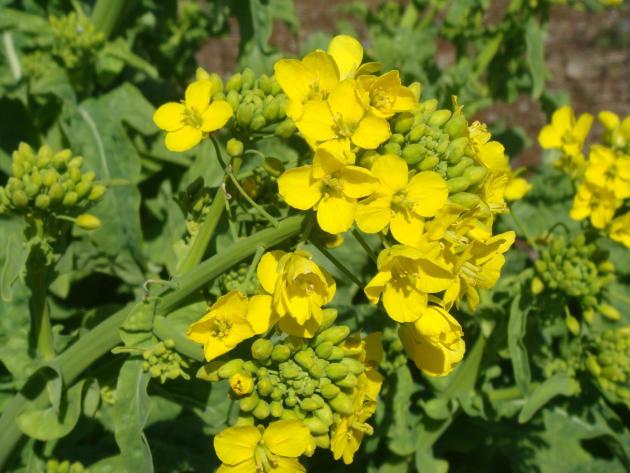
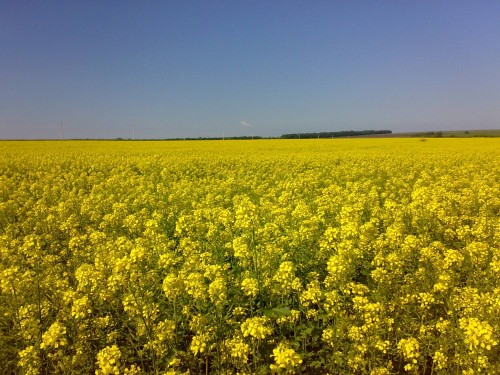
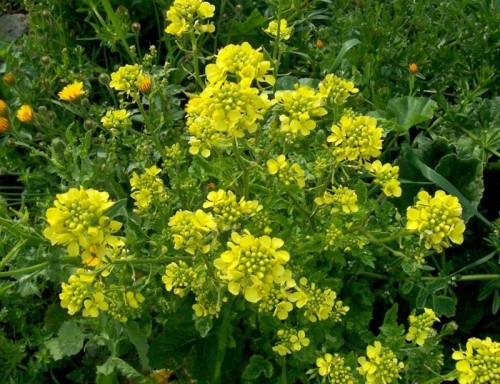
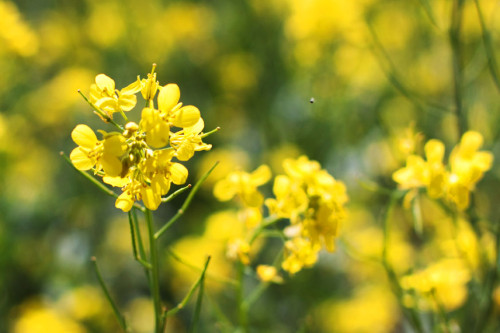
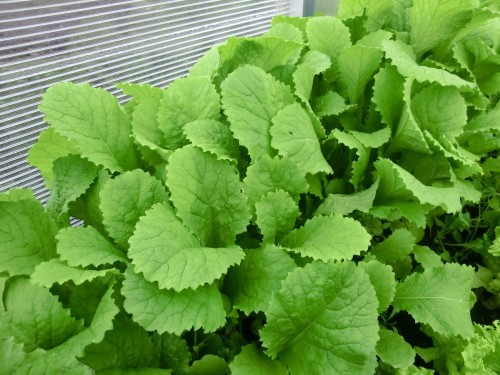
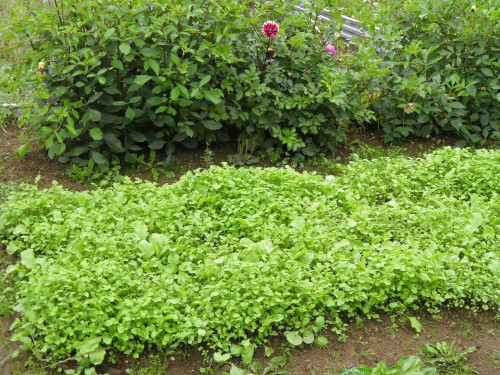
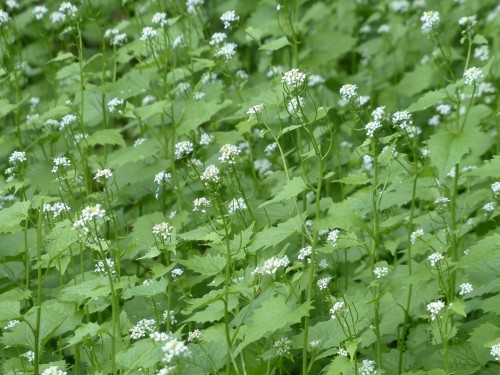
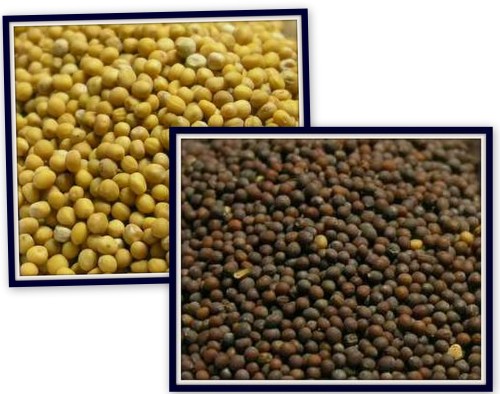
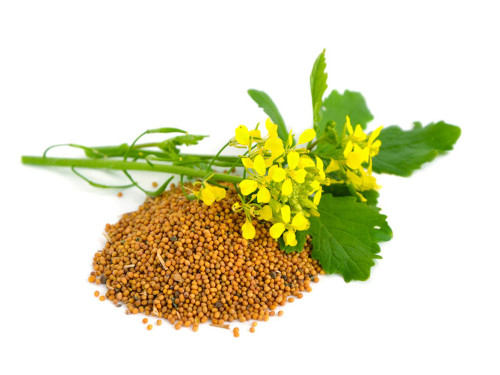
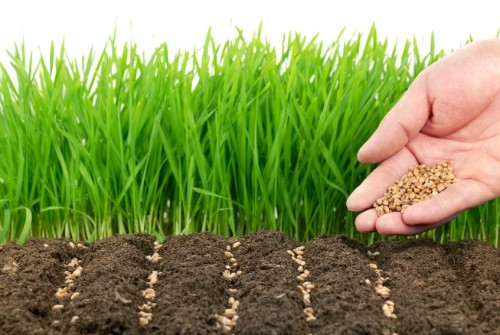
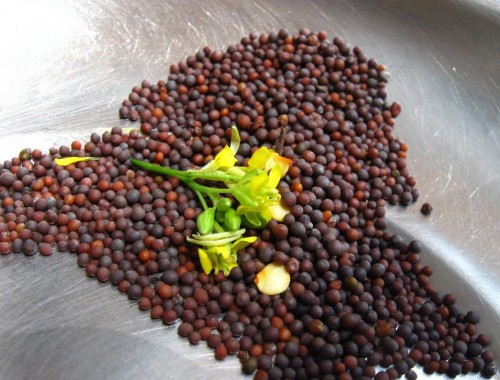
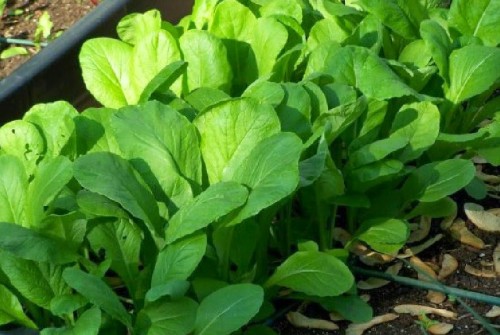
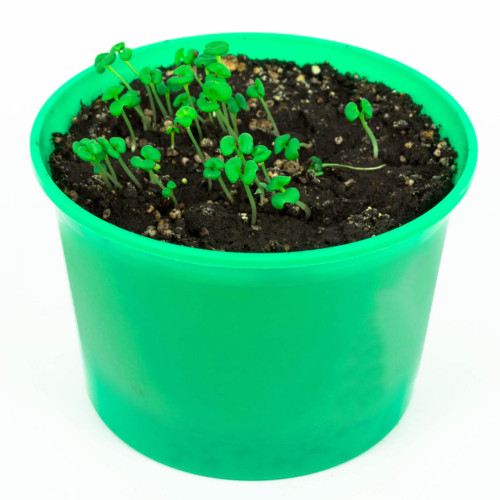












 Start a discussion ...
Start a discussion ...